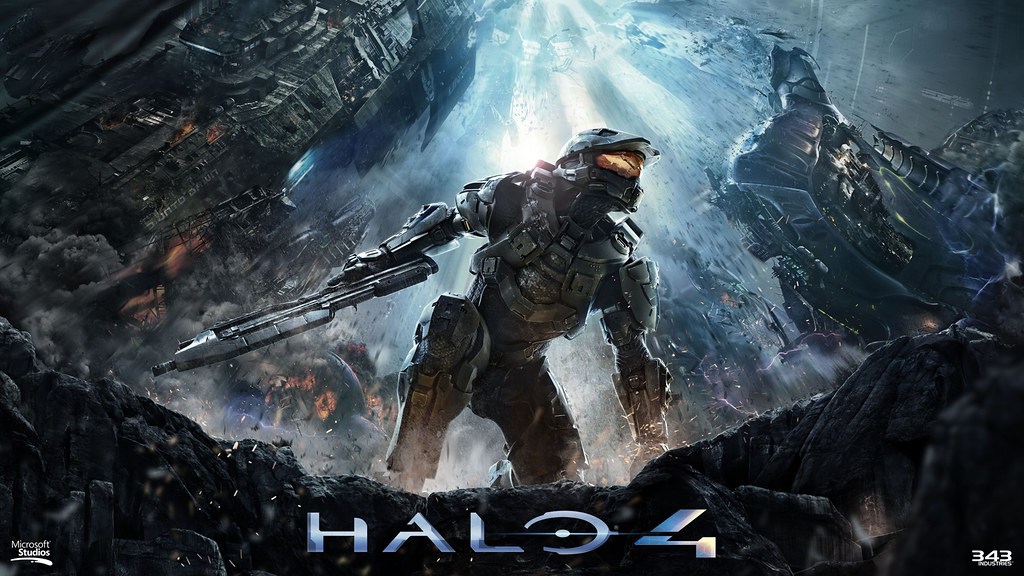Being well into the 2020s, writing about the 2010s feels like travelling to a completely different era. Looking back at the video games of the past and picking up Halo 4 (2012), I realized this game was critically formative for me—not because it was flawless, but because it was brave enough to be entirely different. While other games offered the thrill of a struggle between good and evil, Halo 4 slowed down and looked inward. It asked what happens when the fight is over, the world has long since moved on, and the hero is only left with doubt and loss. With this perspective in mind, it is evident that Halo 4 should be considered a classic video game, inspiring more introspective projects for years to come.
Halo 4 was highly controversial within its own time. The original developer of the series, Bungie Inc., had separated from Microsoft in 2007 because of differences in culture and direction. In its place, Microsoft formed 343 Industries (343i), composed of many Bungie holdovers alongside a new slate of developers with fresh ideas for the franchise. As Microsoft maintained control over the Halo series, Halo 4 was the first trial run of a new game from the post-Bungie era, meaning it had a lot to live up to.
To the dismay of many original fans, Halo 4 saw various changes to the typical game design. In the past, aspects of the game, such as sprinting, had technically existed, but they were optional and situational. Now, these factors were permanent. Bungie designers had once built their maps and pacing around deliberate character movement, but this introduction meant that there were fewer incentives for careful positioning. Diverging significantly from the gameplay identity of Halo (2001), the decisions to differentiate Halo 4 upset fans.
To make matters worse, 343i also introduced customizable weapon loadouts and player perks in the game. Whilst never claiming that these were directly lifted from Call of Duty (2003), the resemblance was difficult to ignore. While many fans resented the idea of Halo chasing trends set by Activision’s top game, it was the 2010s; every shooter game had borrowed from Call of Duty in some way. However, in the eyes of players, this symbolized the influence of the new blood that entered 343i after Bungie’s departure.
Aesthetically, one redesign that earned the ire of fans was the alteration of the Sangheili (Elites), a commonly appearing alien species throughout the series. Microsoft redesigned these characters with sharper metallic armor and more pronounced features, making them appear more brutish than their sleek exterior in Halo 3 (2007). This change, accompanied by the others, made audiences worry that the very identity of Halo was changing, and they may have had a point.
This fear of Halo losing its identity was not helped by the tone shift in Halo 4’s plot. Although there was a consensus among the fanbase that the antagonists were narratively weak, the shift toward a significantly more gritty and serious story, reflecting on the cultural zeitgeist of 2012, contributed to a divided view of the campaign.
Intentional or not, Bungie-era games reflected the cultural sensitivities of the post-9/11 era in America. In earlier Halo games, the Covenant, a conglomeration of alien species hostile to humanity and devoted to their religion, easily paralleled some of the perceptions of the War on Terror in the Western consciousness. The Covenant in Halo 2 (2004) acts brutally toward its own members, using fundamentalist beliefs to justify its actions. It also necessitates the continuation of war through their worship of the Halo rings, which turn out to be weapons of mass destruction. Bungie’s Halo outlines a straightforward conflict: humanity versus the Covenant, good versus evil, with little chance for ambiguity. It demonstrates a religious conflict that deeply affects the player, much like the years during the War on Terror. To players influenced by this war, the Covenant brought back many memories and potential opportunities to re-explore their past.
Where Bungie’s Halo mirrored the clear moral binaries of the post-9/11 years, Halo 4 explores what happens when certainty fades and the hero no longer knows what he is fighting for. Halo 4 captured something that was hanging in the air in 2012 in America: the sense of a generation losing its meaning, its clarity, its center of gravity. Instead of fighting religious fundamentalists, Master Chief, the stoic and near-mythical protagonist, fights against the Didact, a veteran of an ancient war with a grudge against humanity. In some ways, Halo 4 is about a soldier without a purpose, flailing for meaning in a changed world.
This sense of meaninglessness, explored in Halo 4, also unravels in Cortana, the ever-reliable AI assigned to Chief to tackle seemingly impossible missions. Cortana was the perfect companion before Halo 4, staying calm in the face of the biggest catastrophes. In Halo 4, that strength unravels. Rampancy makes her glitch, panic, and lose her sense of self, and by the finale, she sacrifices herself to stop the Didact. Chief tells her, “We were supposed to take care of each other.” With Cortana only mournfully replying, “We did.” Very few moments in the franchise capture vulnerability, grief, and intimacy so starkly. It’s a testament to the impact of uncertainty in our lives and how a search for meaning may cause us to better understand ourselves.
Uniquely, Halo 4 takes a risk and explores new character dynamics, giving viewers insight into a completely different world. Chief, trained from childhood to be the emotionless “perfect” soldier, is often seen by his contemporaries as more machine than man. Cortana, while being an AI, had always expressed a far greater range of human emotion, whether it be vulnerability, wit, or empathy. Halo 4 flips this dynamic on its head: Chief grows more human, revealing his fears, doubts, and humanity, as Cortana’s increasing instability causes her emotions to deteriorate.
Mid-game, when Captain Del Rio demands that Chief hand Cortana over for disposal, Chief responds with a firm: “No, sir.” It’s a moment of outright insubordination that would have been unthinkable for the Bungie-era Chief. It’s proof that now, his loyalty to Cortana outweighs his allegiance to the chain of command.
In the epilogue, Captain Lasky tells Chief that “Soldiers aren’t machines. We’re just people,” while they look over the Earth from orbit. Master Chief pauses, before admitting quietly about a comment from Cortana, “She said that to me once – about being a machine.” This exchange shows that Chief has internalized Cortana’s humanity as his own; the stoic supersoldier is finally acknowledging that he is not just a weapon, but a person with feelings. In Bungie’s Halo games, Chief would have sooner shot something than handled his emotions. It is precisely this moment that transforms the series’s tone from an epic sci-fi power fantasy to a meaningful personal character study. By grounding the story around grief and loyalty, Halo 4 proved that the franchise could be more than self-insert spectacle; it could be personal, tragic, and deeply human in a way that the silent protagonists of the past could not.
Since Halo 4, every new entry in the franchise has had to navigate the tone and themes introduced by this groundbreaking game. Its choice to be different and more introspective has made later games more personal, uncertain, and cynical. This single game has altered the course of an entire series, for better or for worse. The very qualities that made it so controversial in 2012 are also what make it essential for analysis and reflection today, as we examine how the games we play and the media we consume may reflect who we are. In my opinion, that’s a classic worth defending.





